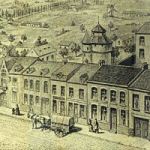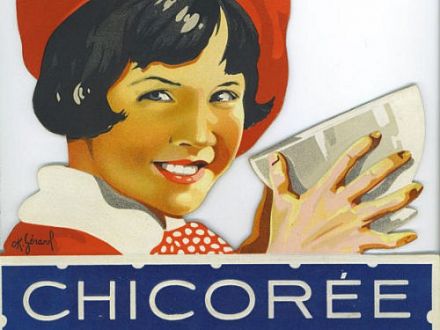 |
All about chicory root > A Short Hisotry
Chicory cultivation dates far back in time. The first signs of this root being consumed are found in ancient Egypt. The roots were cut up and eaten before a meal. It is likely that the bitter herbs spoken of in the Bible included chicories.
In any event, improvements to Cicorium intybus led to the appearance of a large-rooted cultivar used in beverages. Numerous sources attest that chicory used as "coffee" was widespread during the Renaissance in Northern Italy. Industrial roasting began in the Netherlands and Germany about 1763. In 1771 Charles Giraud introduced chicory cultivation near Valenciennes and in 1805 the first roasting factory was established in Cambrai.
In 1806 during the Continental Blockade, under Napoleon III, and during the two World Wars, coffee was hard to come by and chicory replaced it in French homes. It was known as "poor man's coffee." More than 2500 hectares of chicory were planted in the Nord-Pas de Calais. Thus, war has promoted the development of coffee chicory in a spectacular way.

During the American Civil War, the naval blockade of southern ports by the U.S. Navy and the embargo of shipments to Europe froze cotton shipments, as well as food imports from the West Indies and overseas. Deprived of coffee, the inhabitants of New Orleans began adding chicory to their brew to extend their provisions. They discovered that it added body and flavor, and so the Creoles developed a taste for this blend and it is now part of their culinary heritage. If you drop by the famous Café du Monde in the French Quarter, you can enjoy a café au lait with sugar-dredged beignets and enjoy the unique, almost chocolatey, taste of the blend.
For an authentic New Orleans coffee, try using 2/3 coffee and 1/3 chicory in your normal brewing process.

The European leader in pure chicory, and number 2 world-wide, Leroux alone processes almost 95% of regional production with 80,000 tons each year. It all began in 1858 when Jean-Baptiste Alphone Leroux created the Leroux brand by buying a manufacturing business in Orchies in the Nord-Pas de Calais. The factory was then producing chocolate, tapioca, mustard and roasted chicory: the famous granular chicory. The factory was destroyed by fire in 1871 and rebuilt. Leroux decided then to specialize in chicory alone. In 1899 the Breton girl became the symbol of the packets of granules. Numerous chicory-derived products have appeared since then: soluble chicory in 1951, liquid chicory in 1954, flavored chicory in 1991. To find out more, visit the Leroux Museum which houses the Chicory Museum in Orchies, 26 km south of Lille.

Thanks to Leroux Chicory for their kind collaboration.
Photos: The Breton girl, a trademark of Leroux, on the packets of granules created in 1899 / The first Leroux factory in Orchies / The first publicity poster for the brand in 1925.

-

 Recipes
Recipes
-

 Products
Products
-

 Entertaining
Entertaining
-

 Chefs
Chefs
-

 Hints & Tips
Hints & Tips
-

 Glossaries
Glossaries








